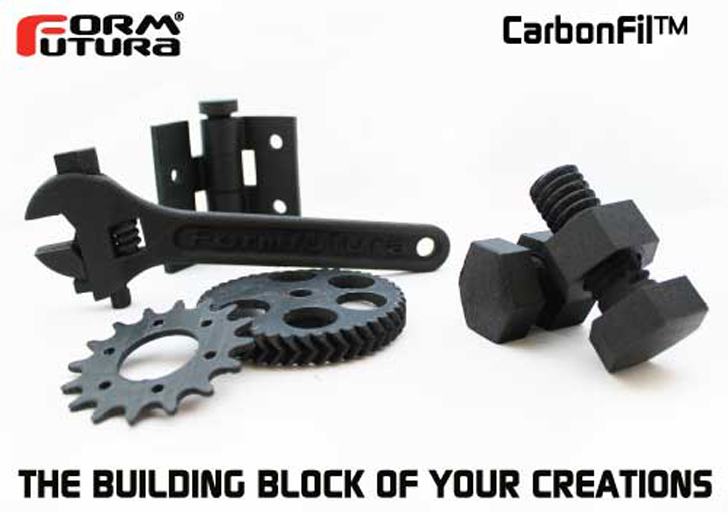What kind of filament do you use for 3D printing? Do you use filament at all? Most of the people I know working with filament-based 3D printers rely on PLA and ABS. Everyone loves Ninjaflex, but there are hundreds of filaments to choose from. Chances are, if you’ve already invested the money to buy a desktop 3D printer, you may be less impressed by the news of the top-down DLP printers like Carbon 3D, who have yet to release any information about how much their machine will cost. And, from a material science perspective, there is a seemingly endless combination of materials you can mix together to create a filament. But where will the innovations occur that set one filament apart from all the others? These kinds of questions are generally loaded, because there are a huge variety of filaments for a good reason: everybody’s trying to make something that’s a lit bit different or maybe has a purpose nobody’s yet thought of.
Formfutura, who strives to bring high quality materials to makers at reasonable prices, has today brought their latest composite to the mix with CarbonFil, their new light-weight and incredibly stiff carbon fiber-reinforced filament. It is a unique blend of reinforced, 20% ultra-light and long carbon fiber stringers with their proprietary blend of HDglass compound. Despite the fact that CarbonFil has a 10% stronger impact strength than HDglass, it maintains its stiffness.

In addition to its resemblance to carbon, the material also reportedly has good first and interlayer adhesion and dimensional stability. It’s also described as light weight. Formfutura adds that CarbonFil is free of hazardous substances, REACH compliant, Bisphenol A free and RoHS certified. Looks pretty good, but there’s only one way to know for sure…



